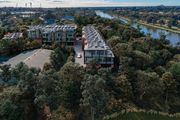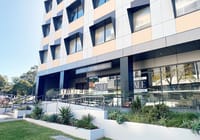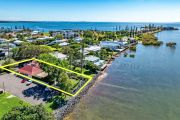
Return to office momentum may have peaked: Barrenjoey
The post-pandemic push to get workers back to the office is losing steam, with new data revealing that attendance across Australia’s CBDs has plateaued at just over three-quarters of pre-COVID levels.
According to a Barrenjoey research note, average weekday office attendance nationally sat at 76.6 per cent of pre-pandemic benchmarks in the March quarter, up just 1.1 percentage points from the previous quarter, suggesting the return-to-office momentum may have peaked.

That comes despite a concerted push from employers over the past 12 months to force workers back into the office – such as NAB on Monday issuing a three-day mandate – by enforcing stricter attendance policies, revamping office spaces and tying in-office presence to employee evaluations.
Sydney led the pack among east coast capital cities, with average office attendance at 81.7 per cent of 2019 levels, buoyed by mid-week peaks. “Office utilisation may have peaked,” Barrenjoey REITs research head Ben Brayshaw wrote.
“CBRE estimates [Sydney] average weekday attendance is 82 per cent of 2019 levels, which increases to 89 per cent midweek. This implies no shifting of the goalposts, in our view.”
In contrast, Melbourne lagged with office attendance at just 63 per cent of pre-COVID levels, while Brisbane tracked at a healthier 79 per cent. JPMorgan analysts said Melbourne’s slower recovery reflected a mix of sectoral dynamics, lax public sector enforcement of office attendance and economic caution.
“Work-from-home continues to be a drag in Melbourne, particularly on Mondays and Fridays,” JPMorgan noted in a separate research note.
“Part of the issue in Melbourne is the high proportion of ‘back office’ staff for the insurance and finance sectors, which are less stringent about working in the office.”
‘Buyer’s strike’ in Melbourne
The lacklustre return has contributed to a broader malaise in Melbourne’s office market, with real estate agents telling the investment bank that institutional buyers were actively avoiding buying towers in the city.
“We note that major transaction evidence in Melbourne has been severely lacking, likely reflecting challenged fundamentals and poor sentiment. Feedback from real estate brokers suggests that there is currently a ‘buyer’s strike’ for Melbourne among institutional investors,” JPMorgan analysts said.
Public sector resistance to returning in-person has also weighed on overall averages, particularly in NSW. A JPMorgan note highlighted that while private sector occupancy in Sydney was effectively at pre-COVID levels, lagging public sector attendance had dragged the total rate down.
The Australian Financial Review on Monday revealed that NSW Treasury employees were only in the office about half the time – or 2.5 days a week on average – despite Premier Chris Minns ordering public servants to work “principally” from the office. Transport for NSW workers were even worse at attending the office, with more than 80 per cent of non-frontline staff attending the office one day a week or less.











